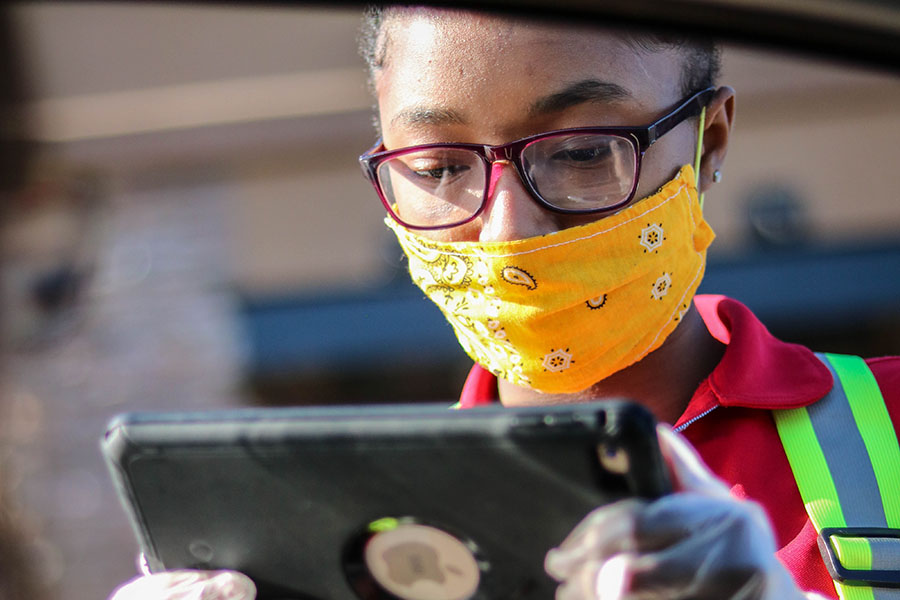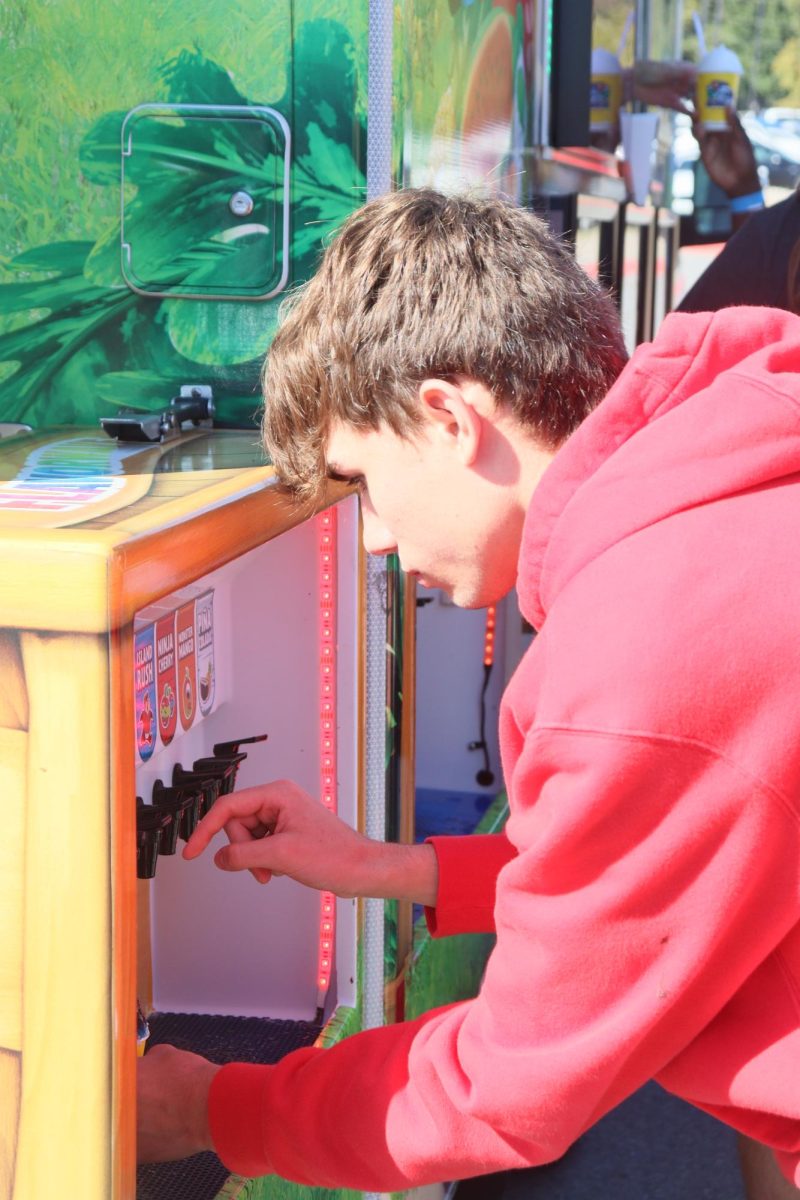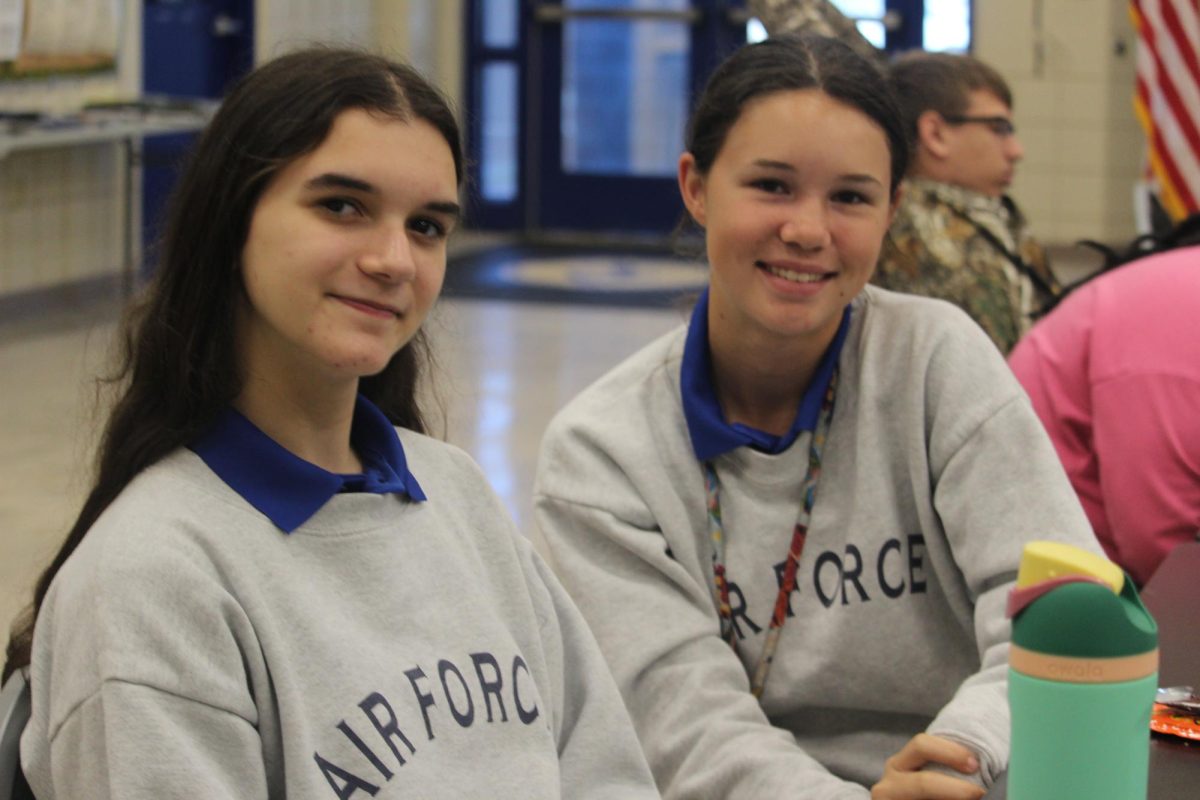Behind the Screens
Pandemic forces students to adapt to virtual learning, balancing school with work
Taking an order, senior Jaedyn Lee works a shift at Chick-fil-A May 9. Although Lee chose to stay on campus, many students chose virtual learning to balance their classes with their work schedules.
November 17, 2020
The coronavirus pandemic has created several challenges in the lives of students, forcing them to juggle their educations, personal affairs, jobs and extracurriculars. Students who encounter the recently implemented hybrid method of education, virtual learning, are in for a unique journey.
Research based out of the University of Colorado at Boulder shows that graduation rates at virtual schools waver around 50-61%, while the national average for public schools is 85%. Despite this difference in success, it can also be beneficial considering the flexibility it gives students, especially during a pandemic.
Junior Hansi Perera, an online student, agrees that virtual classes have an entirely different energy than physical classes.
“I had a class in the car driving out of town,” Perera said. “It’s a really different experience, but it’s so flexible and I like it a lot. It takes a bit of maturity, but it’s significantly easier than onsite.”
This digital form of education provides a contemporary dynamic that teenagers are used to. In the age of technology, modern problems require modern solutions.
“Since I’m taking three AP classes this year and Pre-Calc/Trig, I decided to only work two days a week [and] weekends only,” Perera said. “It isn’t the best money, but I’m still making a substantial amount while being able to keep my grades up.”
Junior Austin Williams chose virtual learning to focus on his steady job at Pasta Jacks in Bryant while simultaneously getting his education. However, he has found it challenging to have no one there to hold him accountable.
“A common challenge is trying not to procrastinate [and] having little to no motivation whatsoever,” he said. “You don’t have anyone there necessarily making you do it. You know that you need to, but no one is in the room with you telling you what to do. You’re just given the material.”
No matter the schedule, screens are an inevitable part of learning remotely for millions of students. Video conferences can be a healthy social activity for kids who are isolated at home. However, all screen time is not created equal, experts say, and some kinds are better than others. Techniques such as listening and visualization may be less effective if done excessively for the sake of filling up a school day.
“By doing virtual, you can keep school separate from your social interactions,” Perera said. “I get school work done more efficiently now, and I can still find time for my friends and family. Not to mention, you are at way less risk of contracting or spreading the coronavirus, essentially protecting your loved ones and reducing the spread in general.”
Zoom, a frequently used platform in modern video communications, provides students an online version of a classroom. It gives students the opportunity to socialize and ask questions with the push of a button. Senior Hailee Moffett is an online student who enjoys the free time it offers, but feels that she is missing out on a true senior experience.
“[Virtual] is honestly worth it if you are a sophomore or junior; you have a lot more free time and still get to interact with your peers via Zoom,” Moffett said. “As a senior doing virtual, I would advise my fellow seniors to stay in school, because though this year is very different, you really don’t get the senior experience at all online.”








